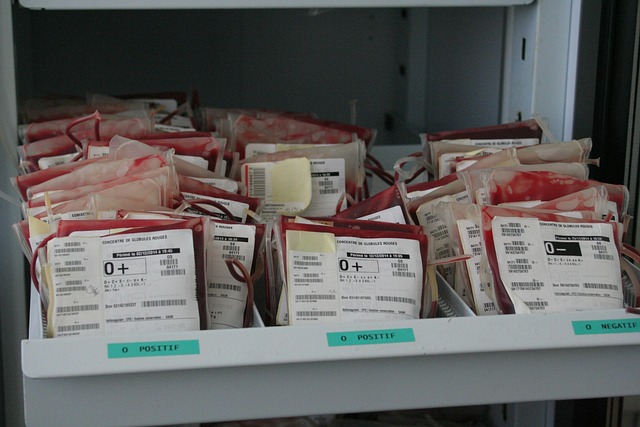Regulatory Frameworks Affecting Cross-Border Therapeutic Supply
Cross-border movement of plasma-derived therapeutics involves layered regulation across collection, processing, and transport. This article summarizes how rules on collection methods, donor screening, product fractionation, cold storage, and traceability shape international supply.

Cross-border therapeutic supply relies on harmonized regulatory frameworks to ensure safety, quality, and availability of plasma-derived products. Regulatory regimes intersect with operational practices such as apheresis collection, donor screening and eligibility, fractionation into biologics, and the coldstorage and logistics that keep intermediates stable across borders. Policymakers, manufacturers, and service providers must align standards for quality, traceability, and compliance while acknowledging differences in national licensing, import/export controls, and pharmacovigilance systems. This complexity affects how donors are recruited, how antibodies and other plasma components are tested, and how transfusion-related products are ultimately used in clinical settings.
This article is for informational purposes only and should not be considered medical advice. Please consult a qualified healthcare professional for personalized guidance and treatment.
apheresis and collection standards
Apheresis is a common collection method for plasma used in therapeutic manufacture. Regulations typically specify site accreditation, device validation, and staff training requirements. Standards address collection volume limits, frequency of donation, and pathogen-reduction strategies. For cross-border supply, authorities may require documentation proving that apheresis procedures met the donor country’s regulatory criteria and that traceability links each donation to testing records. Harmonized technical specifications—often grounded in international guidance—help streamline acceptability of imported plasma for fractionation while protecting recipients from transfusion-transmitted infections.
donors: eligibility and screening
Donor eligibility and screening policies are foundational to safe plasma collection. Screening protocols cover medical history, exposure risks, and laboratory testing for antibodies and infectious agents. Differences in deferral periods, acceptable risk thresholds, and testing panels can complicate international acceptance of plasma products. Robust screening data is needed for traceability and for regulators to assess whether donor pools meet the importing jurisdiction’s safety expectations. Outreach programs that improve donor understanding of eligibility requirements support a reliable and compliant supplychain across regions.
fractionation and biologics regulation
Fractionation transforms plasma into biologics such as immunoglobulins, clotting factors, and albumin. Regulatory oversight covers manufacturing process controls, validation of fractionation steps, impurity removal, and final product specifications. Authorities review production licenses, batch records, and quality management systems to grant market authorization. When biologics cross borders, regulators evaluate whether fractionation complied with Good Manufacturing Practices and whether clinical data, potency assays, and antibody profiling meet local standards. Differences in product classification and licensing pathways can extend approval timelines and affect availability.
logistics, coldstorage, and traceability
Logistics and coldstorage are critical because plasma and derived intermediates are temperature-sensitive. Regulatory frameworks require validated cold chains, monitoring systems, and contingency plans for deviations. Traceability requirements mandate chain-of-custody documentation from collection through fractionation, testing, and distribution. Electronic recordkeeping and standardized identifiers facilitate recalls or targeted investigations if antibody or contamination issues arise. Import permits and customs processes add administrative steps; regulators often require advance notification and evidence of coldstorage compliance to accept shipments.
compliance and quality assurance
Compliance and quality controls encompass batch release testing, pharmacovigilance, and inspection regimes. Regulators conduct facility audits, assess quality systems, and enforce corrective actions where needed. Cross-border supply depends on mutual recognition agreements or data-sharing arrangements that let one authority rely on another’s inspections or test results. Quality metrics—such as product potency, purity, and documented antibody titers—inform clinical decisions for transfusion or therapeutic use. Ensuring consistent quality across jurisdictions reduces the risk of product shortages or safety incidents.
outreach, transfusion uses, and antibodies
Public and professional outreach supports both donor recruitment and clinical use of plasma-derived therapeutics. Educational outreach clarifies donor eligibility, screening rationales, and the role of antibody testing in product safety and efficacy. Clinicians need clear labeling and traceability information to guide transfusion decisions and to report adverse events. Regulatory frameworks encourage transparent communication about antibody-based products, their indications, and limitations while preserving confidentiality of donor data. Coordinated outreach helps maintain donor pools and informs clinicians about supply constraints or product interchangeability across markets.
Conclusion
International movement of plasma-derived therapeutics is governed by intersecting regulations that address apheresis, donor screening, fractionation, logistics, coldstorage, traceability, and quality systems. Harmonization efforts, mutual reliance mechanisms, and clear traceability help mitigate risks associated with differences in national standards. Stakeholders across the supplychain—regulators, manufacturers, collection centers, and clinicians—must maintain rigorous compliance and transparent documentation to support safe, reliable cross-border therapeutic supply.






